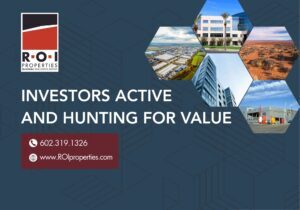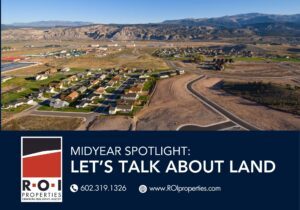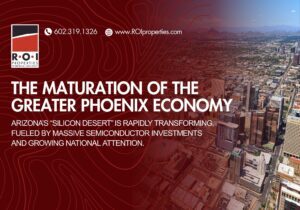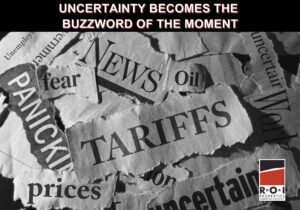
Beth Jo Zeitzer, Esq. is the owner and designated broker of R.O.I. Properties, a full-service real estate brokerage firm focused on working with business owners, investors and property owners regarding the marketing and sale of commercial and residential properties, including retail, office, industrial, multi-family, hospitality and land assets. She can be reached at (602)319-1326 or [email protected].
Through the most recent quarter, the commercial real estate market experienced an uptick in sales volume and average prices per square foot in the industrial, office and retail categories. It may be too early in the recovery to necessarily call this a Goldilocks market – not too hot, not too cold – but the indications are that the worst of the bearishness is over in the commercial real estate sector. While the numbers are well off the bottom experienced in 2010-12, they also remain far below the historic peak levels of 2005-06. For example, the average price per square foot for office space – which topped out at $278.64 in Q4 2005 and dropped all the way to $95.13 in Q1 2011 – now sits at just over $150.
Add to that the fact that interest rates remain historically low, and attorneys and their clients may wonder whether the own vs. lease equation has tipped in one direction or another. The truth is there is no set answer to that question. There are lucrative opportunities and potential disasters lurking in any market, and you or your clients need to crunch the numbers on what makes economic sense – as well as examine some of the soft factors that aren’t necessarily found on a spreadsheet.
The Advantages & Disadvantages of Leasing
On the plus side, leasing property provides the option to occupy space at premier location or synergistic multitenant environment, which might otherwise be unaffordable. Leasing space allows the user to concentrate on its primary business without the distractions of management – and offers the flexibility of expansion/contraction and/or relocation without having to sell the building.
Financially, leasing means less out-of-pocket cash and therefore more capital for investing in products or services; for that reason, it can even be viewed as a source of financing. Plus, tenants are generally insulated from unforeseen capital costs such as mechanical systems replacement, structural repairs, and roof or parking lot replacement. Finally, the occupancy costs of leasing are fully deductible.
On the minus side, businesses with a strong earnings record, readily accessible capital, and the ability to take advantage of tax benefits from ownership, may find that leasing is often the more expensive alternative. If a property goes up in value, a leasing tenant doesn’t benefit – and any improvements become the landlord’s property or may even need to be removed. From a quality of life perspective, a leasing tenant has little or no control over the types of the other tenants placed in the building.
Advantages & Disadvantages of Owning
The arguments in favor of owning a property are largely a mirror image of those for leasing: An owner-user benefits from capital appreciation over time; is able to reduce debt and build equity through the amortization of the original loan amount (assuming conventional financing); can deduct interest and cost recovery; and enjoys the opportunity to operate the building as they see fit. In addition, if a portion of the property can be rented out, the income from other tenants can be used to pay the mortgage on the property or for other business or investment purposes.
There are numerous risks to ownership, including internal and external obsolescence, market risks, financing risks and unforeseen capital requirements for repairs and maintenance. Most commercial lenders require equity at closing of 20-30 percent of the cost of the property acquired, tying up otherwise free capital, although some Small Business Administration (SBA) loans may come in as low as 10 percent. The sources and availability of debt may be limited in times of economic recession or depression, and rising interest rates may make refinancing difficult or impossible. Commitment to long-term debt financing often involves a 20-year amortization and possible prepayment penalties.
Beyond the financial considerations, managing a commercial property can absorb manpower and require an owner to focus on building management issues (legal compliance, health and safety issues, contractor management, etc.) rather than activities central to business success.
Unlike our friend Goldilocks, commercial real estate doesn’t provide an obvious signal like porridge bowls or beds to alert that a market has reached just-right status for investment. Businesses that decide to purchase now need to look past today’s environment, with an expected holding period of at least five years. And those who prefer to lease need to recognize that the trend of prices going up and vacancies going down could result in cost increases down the line.










